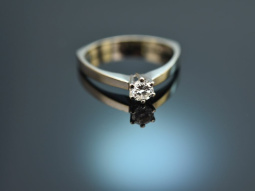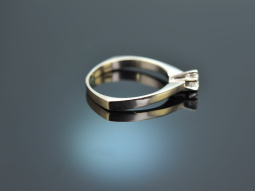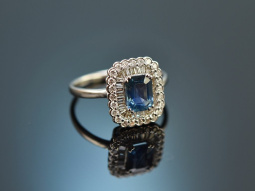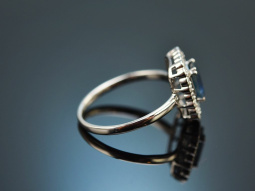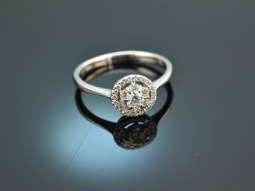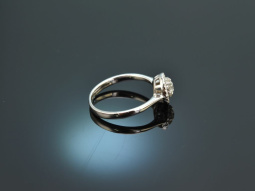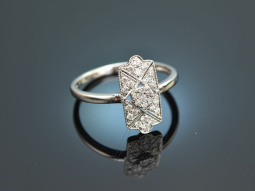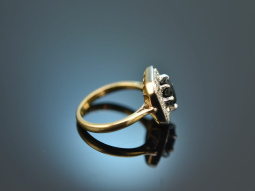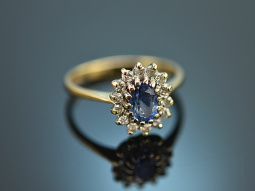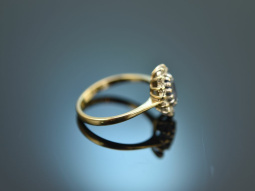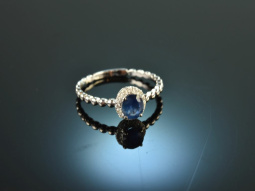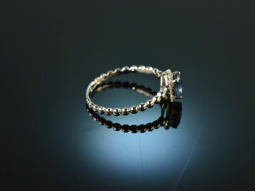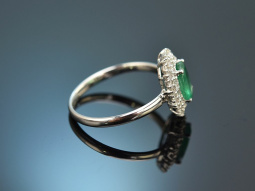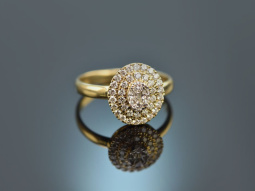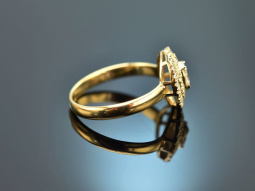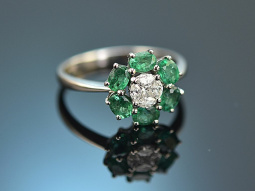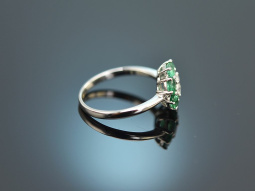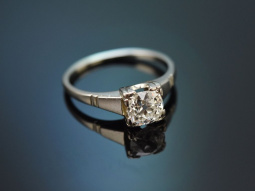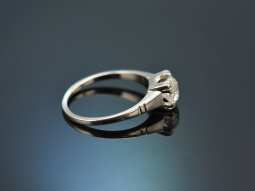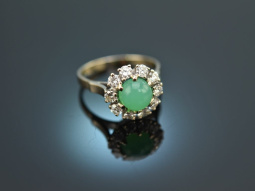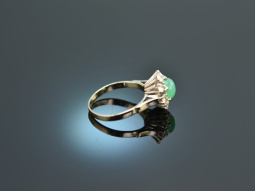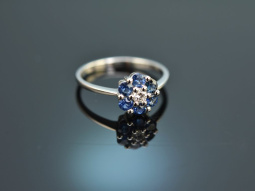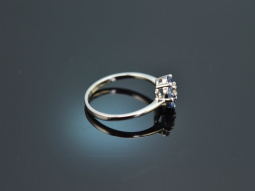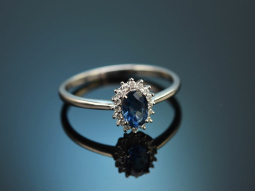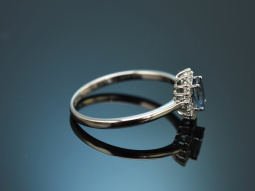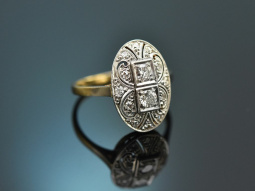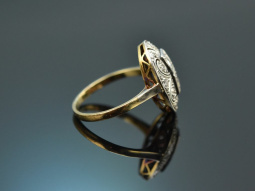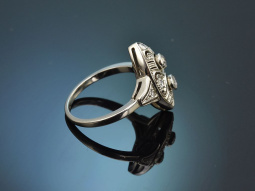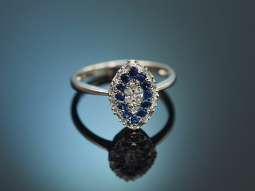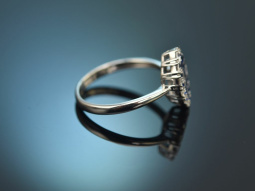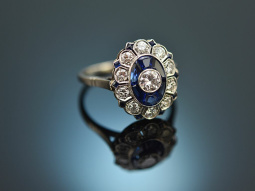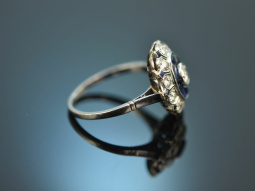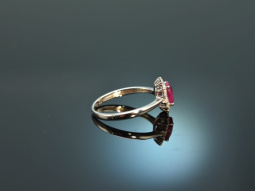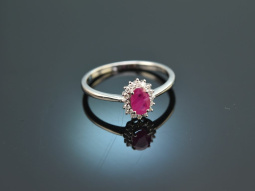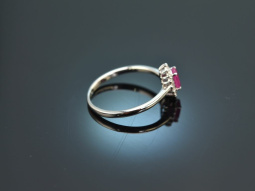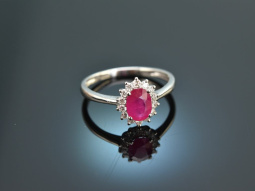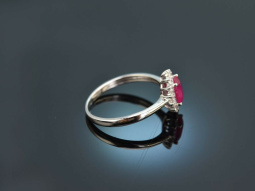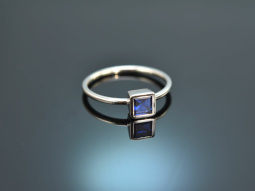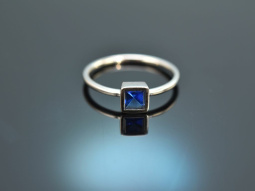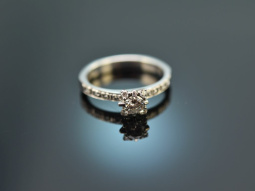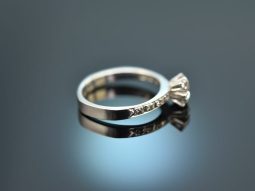Engagement Rings
Engagement jewellery is presented as a promise of marriage and symbolises lifelong fidelity and commitment. Today, it is exclusively rings, often set with diamonds, that are given as a sign of this promise. In our "Engagement rings" category, we present rings from three centuries that emphasise your very personal promise of love in a worthy manner. Find out more
Rings set with gemstones as a cherished engagement tradition
Probably the most popular variant of the engagement ring since the middle of the 20th century is the solitaire, i.e. a single diamond that sits enthroned on the ring band. The New York jeweller Charles Lewis Tiffany designed this classic in 1886 in a high prong setting, which allowed the stone (diamond or brilliant) to literally float on the ring band and guaranteed it maximum exposure to light so that it could unfold its full brilliance. This model went down in jewellery history as the quintessential symbol of love and is still known today as the Tiffany Setting.
You and me: now and forever
It is often the setting of an engagement ring that underlines the special symbolism of the piece of jewellery. Take trilogy rings, for example, whose three diamonds or coloured stones stand for the past, present and future of the couple.
Another traditional variation of the engagement ring is the toi-et-moi ring: it is adorned with either two gemstones or a gemstone with a pearl, representing the future couple.
Acronym rings with hidden messages
Acronym rings also utilise the language of gemstones with particular ingenuity. The initial letters of the gemstones set in them form acronyms such as DEAREST or REGARDS as a hidden message to emphasise the marriage vows.
Why is the engagement ring worn on the left hand?
The custom of wearing the engagement ring on the ring finger of the left hand goes back to the idea of the vein of love, the Vena Amoris, which leads from the left ring finger directly to the heart and seals the vow of fidelity there.
